Many different breeds of horse have characteristics that help them stand out from the crowd. But when it comes to their coats, there’s perhaps nothing more distinctive than spots!
We’re huge fans of spotty horses. That’s why we’ve decided to take a look at 12 spotted horse breeds from all over the world. So sit back, and get ready to find out more bout some of the most stylish equines on the planet!
1. Appaloosa
No list of spotted horse breeds would be complete without perhaps the best known of them all – the Appaloosa. The unusual name comes from the Palouse River, which runs across Idaho and Washington.
This horse has several different coat patterns – six in all. We’re going to take a closer look at two, the Leopard and Blanket Appaloosas. They’re both distinctively dotty!
Most striking of all is the Leopard Appaloosa. The coats of these horses are white and covered in spots, which stretch from the horses’ heads right down to their hooves. The look is very similar to that of the big cat from which the pattern takes its name.
Then there’s the Blanket Appaloosa. In this case, the majority of the horse’s coat is a dark color. Bay and black are common, and you may also come across dun, chestnut, and even grullo examples.
But towards the back of the horse, there’s a lighter area – a white patch that resembles a blanket. And it’s this “blanket” that carries the spots.
In both cases, you may see a sort of “halo” around the spots. This is where the coat has the same color as the spot, but is overlaid with a layer of white hair.
2. British Spotted Pony
As you might guess from the name, the British Spotted Pony has a very distinctive dotty pattern. The breed originated in England and is thought to be many centuries old.
In 1947, it gained its own association to register horses and preserve their characteristics. There are several stringent requirements a horse must meet in order to be registered as a British Spotted Pony.
The spots must be the leopard, near-leopard, snowflake, blanket or mottled types. Large patches of color, as with piebald or skewbald horses, won’t do.
And it doesn’t stop there. The animal must also have mottled pink skin around its eyes and muzzle, and in its ears. It must have striped hooves too. And the sclera, or the whites, of its eyes must be white (most other horses have dark sclera).
Maintaining the breed in the face of this list of requirements isn’t particularly easy. That’s especially the case when you know that two spotted horses can produce a foal that isn’t spotted at all!
Today, there are around 800 registered British Spotted Ponies. They are used for riding, drawing carriages and wagons, and for shows.
3. Knabstrupper
The stunning Knabstrupper originates from Denmark, where it was first established as a breed in 1812. All horses trace their lineage back to a solid-colored stallion, Frederiksborg, and a chestnut mare called Flaebe, with leopard-style blanket markings.
Similar to the British Spotted Pony, Knabstruppers have pale sclera and striped or light-colored hooves. The skin around their eyes and muzzle, and inside their ears, is pink and mottled.
Knabstruppers quickly became known for their stamina and high spirits. And because they were mostly left outside rather than in stables, they developed into very rugged horses. Today, most continue to live to a ripe old age.
They are often successful in show jumping and dressage. And they are also used to pull carriages and for riding.
The popularity of the breed is reflected in its prevalence around the world. As well as its ancestral home of Denmark, Knabstruppers are bred in the UK, USA, Australia, New Zealand, Canada, Sweden, Norway, the Netherlands, Switzerland, Italy and Czechia.
4. Nez Perce
The Nez Perce takes its name from the North American tribe which began breeding it in 1994.
The breeding program was born from the tribe’s desire to reinvigorate its traditional horse culture. The Nez Perce had bred the ancestors of the modern Appaloosa. But the culture had been gradually eroded through the 19th century by a combination of assimilation and reservation life.
The Nez Perce people crossed an Appaloosa with an Akhal-Teke. The latter is a horse which originates in Turkmenistan and is known for its metallic-sheened coat. The result was the long-limbed and elegant Nez Perce horse.
The horses are excellent at long-distance riding, as well as being very good at jumping. They often have buckskin or palomino coats, overlaid with spots that show their Appaloosa heritage. Some people believe that they look more like the first Appaloosas than the stockier modern-day Appaloosas do.
5. Pony of the Americas
The Pony of the Americas originated in Iowa. The stallion from which all ponies are descended was an exotic cross between an Appaloosa, Arabian and Shetland pony.
The breed registry opened in 1954. It admits horses with many different bloodlines, but they must conform to stringent breed characteristics. These include the horses’ colors and coat patterns.
Not all Ponies of the Americas are spotty. But they do include horses with the leopard, snowflake and blanket patterns. They also include horses with darker spots of color on a dark background, and white horses with black spots on their hindquarters.
They also have white sclera and mottled skin around their muzzles and genitalia. Some, but not all, have striped hooves, while others may have unpigmented hooves.
Ponies of the Americas were bred mainly for Western riding. But they have proved successful in a range of other disciplines, including endurance riding and driving.
6. Tiger Horse
Hearing the name “Tiger Horse” you might imagine that we’ve gone off topic to striped, rather than spotted horses! But in fact, the name is a translation from Spanish, which doesn’t distinguish between the markings of tigers and leopards.
The precise origins of the breed are something of a mystery. Some people believe its ancestors to be the Spanish Jennet and the Chinese Soulon. The latter shares the same leopard spots as the Tiger Horse.
The spotted coat is also similar to the Appaloosa – but it’s not only spots that mark this horse out from the crowd. The Tiger Horse has a rare intermediate four-beat ambling gait, sometimes referred to as the “Indian shuffle”. This makes it a very smooth and comfortable ride.
The breed is still under development, and there are two breed registries: TIGRE and The Tiger Horse Association. The two take quite different approaches.
TIGRE is focused on developing the breed to conform to what it considers desirable characteristics. The THA, on the other hand, aims to seek out existing horses, and to preserve and raise awareness of the breed.
7. Noriker
Once known as the Pinzgauer, the Noriker is a breed of draft horse that originates from Austria. It was used extensively in agriculture, reaching the peak of its popularity between the First and Second World Wars.
The mechanization of farming led to a decline in numbers, with a drastic fall taking place during the 1970s. Since then, the population has happily recovered, and there are now around 10,000 Norikers in Austria alone. The horses are also bred in Italy, and the Italians have a separate breed standard.
Many, but not all, Norikers have spots. Those that do, tend to have leopard-type markings, and these are considered a desirable characteristic. There are also a large number of black horses, as well as blue roans, other roans, and chestnuts.
Other patterns include tobiano (another spotted variety, with white patches) and overo (a pinto coloration of white over dark).
8. Colorado Ranger
The Colorado Ranger was first bred in America’s Colorado High Plains, but the breed was descended from Turkish horses. The Colorado Ranger Horse Association was formed in 1935. And 70 years later, over 6,000 horses had been registered.
The Colorado Ranger is another horse that may be either solid-colored or spotted. The spotted kinds have leopard-style spots. Horses with American Paint Horse breeding or pinto coloration are not eligible to be registered.
There are lots of similarities between the Colorado Ranger and the Appaloosa. Indeed, the former can also be admitted to the Appaloosa registry. About 90 percent of Colorado Rangers have dual registration.
They were originally bred as ranch horses, but are now also used for trail and leisure riding. They’re renowned for their agility and pleasant temperament.
9. Walkaloosa
Although not strictly a separate breed, we couldn’t pass by without mentioning the Walkaloosa. Look carefully at the name and you’ll be able to work out exactly what this horse is. Yes, it’s any gaited horse with Appaloosa coloring!
Some Appaloosa bloodlines can be traced back to the Paso Fino, a gaited horse breed. As a result, their descendants exhibit the same four-beat ambling gait. It’s sometimes known as the Indian shuffle, and is also exhibited by the Tiger Horse.
This smooth gait makes the Walkaloosa an exceptionally comfortable ride. It’s not always as desirable in the show ring, however, where horses are judged on the classic up-and-down trotting motion.
As a result, the Walkaloosa is not admitted to membership of the Appaloosa Horse Club. In 1983, the Walkaloosa Horse Association was founded, providing a dedicated association for these beautiful creatures. The Association is focused on the preservation and promotion of the breed.
10. Mustang
Although you’ll often hear Mustangs referred to as wild horses, this isn’t exactly true. They are actually descendants of domesticated Spanish horses that have strayed, and are more properly termed feral.
Mustangs can be found in a number of different colors and patterns. Their varied genetic composition means you can find bay, brown, black, sorrel, chestnut and buckskin horses.
But some mustangs also have spotted patterns. These include horses with markings similar to the Appaloosa, as well as palominos with larger patches of color.
Whatever their color and pattern, most mustangs are relatively small. They reach a maximum height of between 14 and 16 hands.
Today, thousands of mustangs continue to roam free across North America. More than half of those are found in the state of Nevada.
11. Icelandic
Although termed a horse, the Icelandic is actually closer in size to a pony. They are remarkably healthy creatures, vulnerable to few diseases, and hardy and long-lived. The record goes to an Icelandic mare domiciled in Denmark, who lived to the grand old age of 56.
They are the only breed of horse to be found in Iceland. Today they can also be found in 22 countries across Europe and North America.
Their lineage can be traced back to the ponies brought to Iceland by Norse settlers as early as the 9th century. Over the years, a combination of selective breeding and natural selection developed the modern Icelandic horse. A registry was established in 1904 to promote and preserve the breed.
Icelandic horses can be found with a wide range of different coats. Whilst not all are spotted, palamino and pinto examples can be found. The amazing variety is reflected in the number of Icelandic words used to describe their color and pattern combinations. There are over a hundred in all.
12. American Paint Horse
The colorful coat of the American Paint Horse is a defining characteristic of the breed. They usually display large patches of color in a pinto pattern. But some solid-colored horses are also eligible to be registered, as long as they meet requirements for their bloodlines.
American Paint Horses most commonly have dark coats in chestnut, bay, sorrel, black or brown, with white spots. But many other color combinations can be found too.
The spots can be of any kind except leopard, which are characteristic of the Appaloosa. They can also be found on pretty much any area of the horse’s body.
The American Paint Horse can be found competing in a range of equestrian disciplines. It’s particularly favored in Western events and show jumping.
Dotty About Spotty!
We hope you’ve enjoyed our round-up of 12 spotted horse breeds! We’re dotty about spotty horses, and we’ve loved sharing their histories and characteristics.
With so many active associations looking to preserve and promote these wonderful breeds, we hope their future is bright. And if you’ve found a favorite, why not joint an association and play your part in raising awareness?
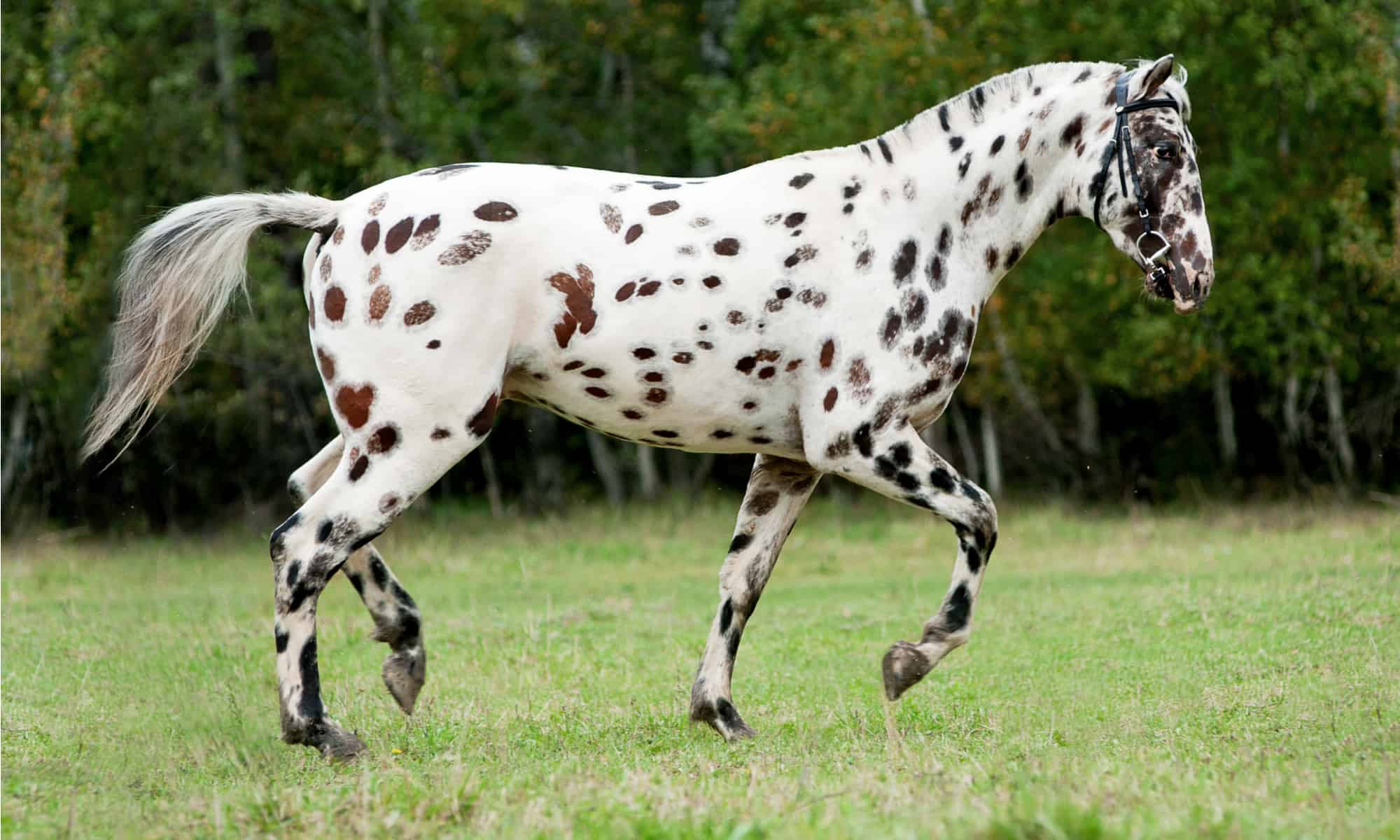
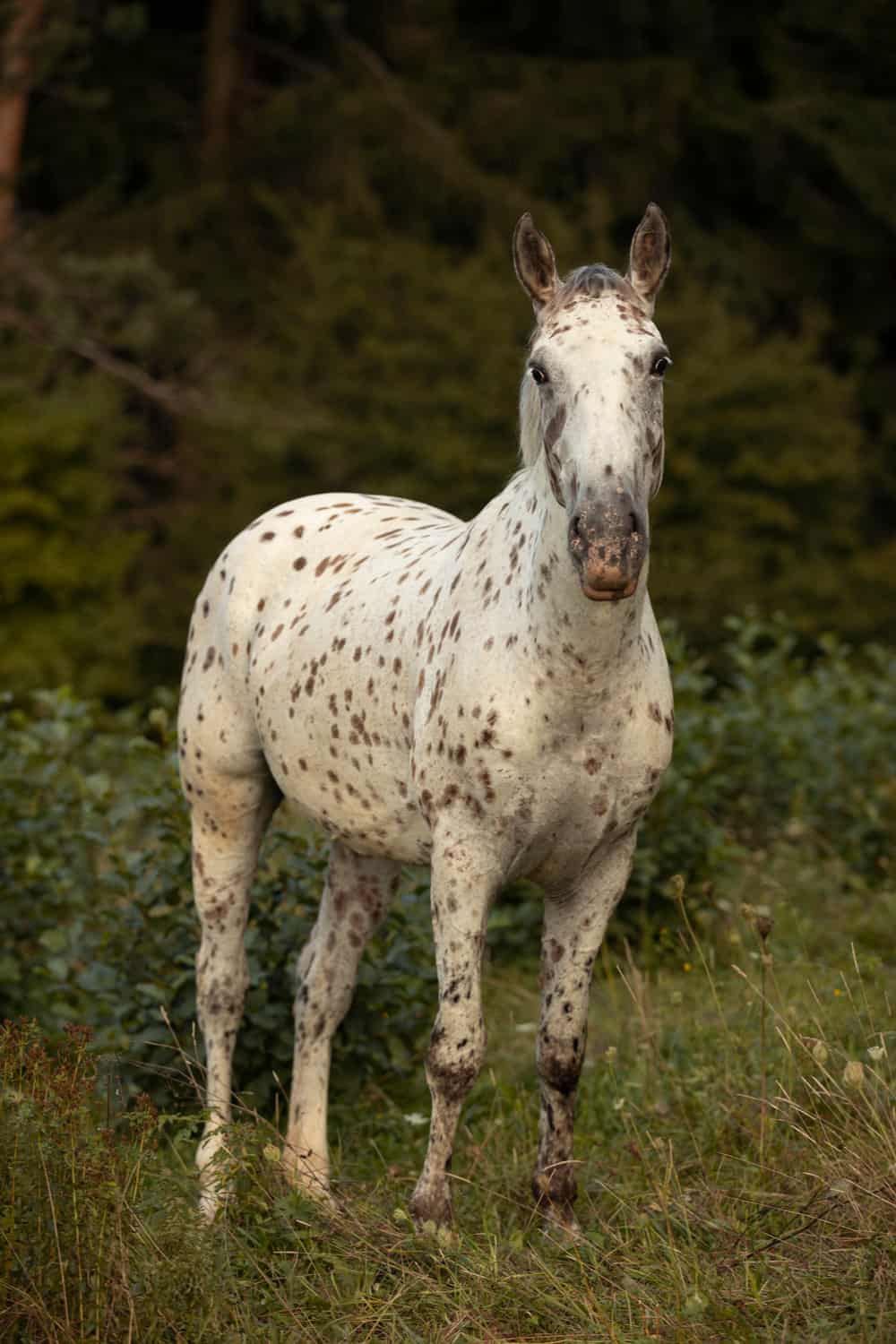
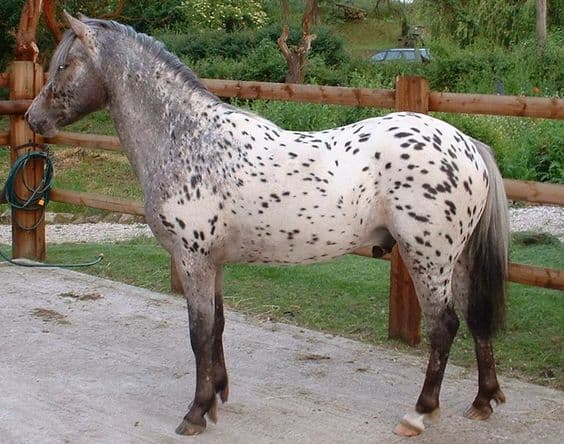
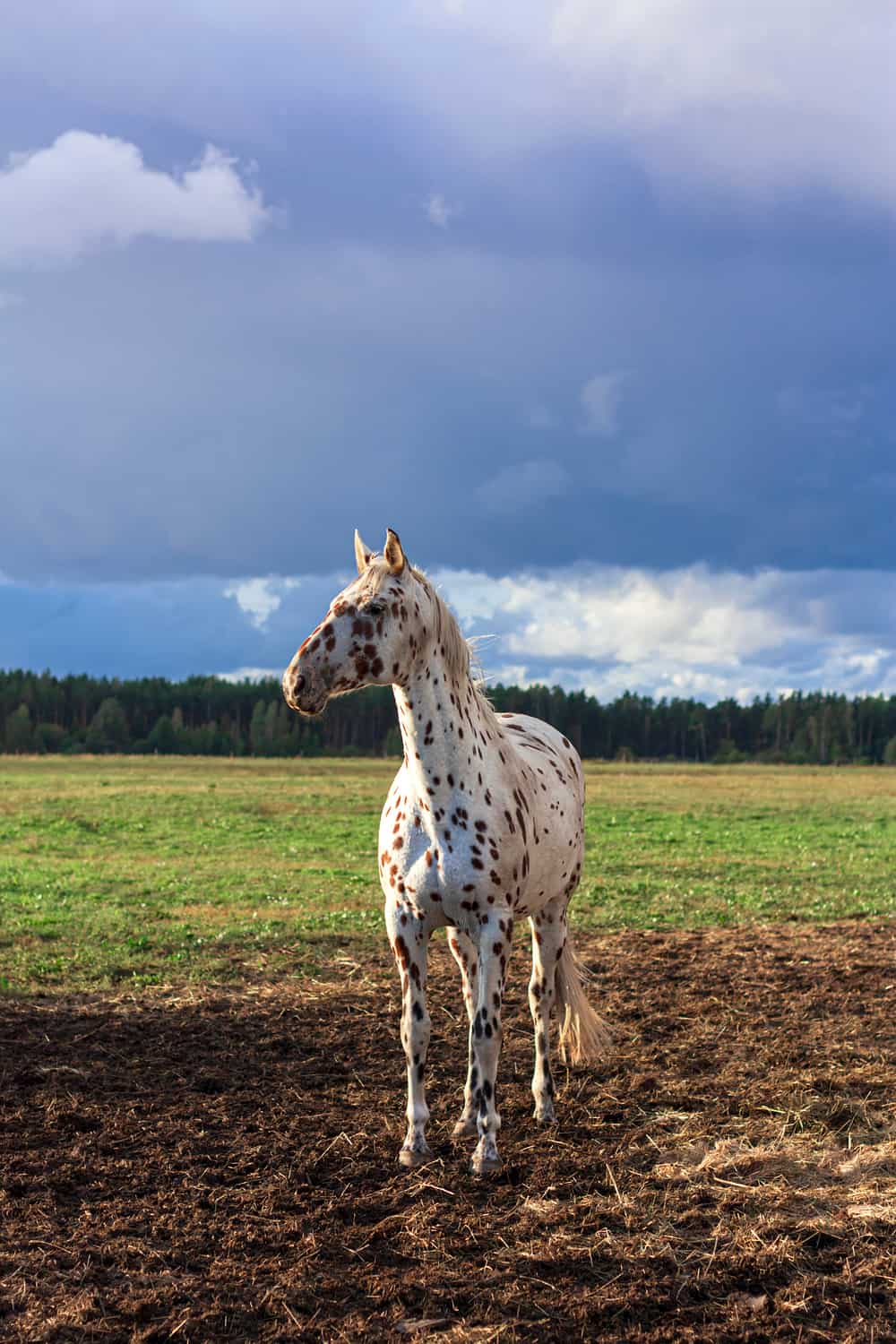
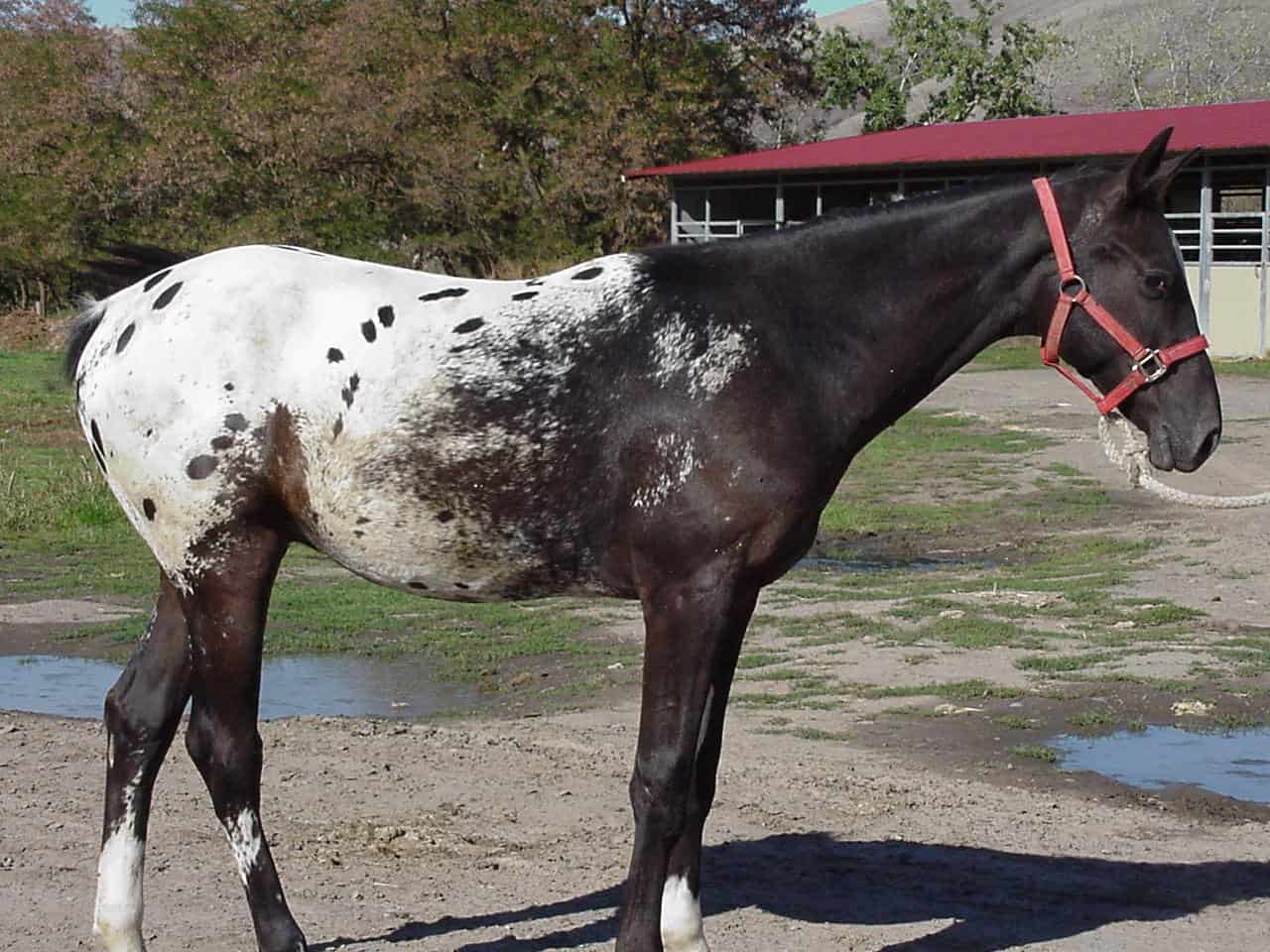
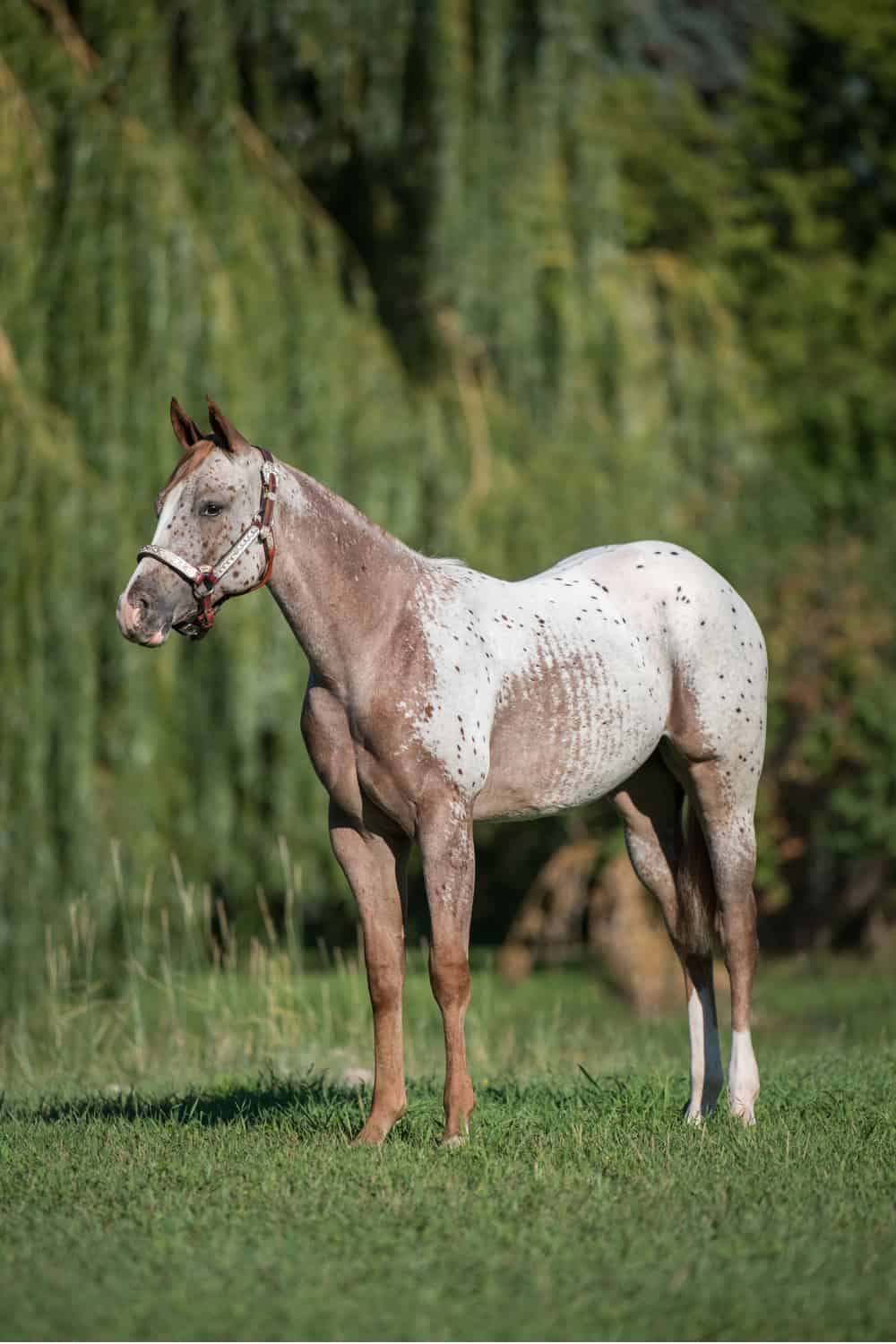
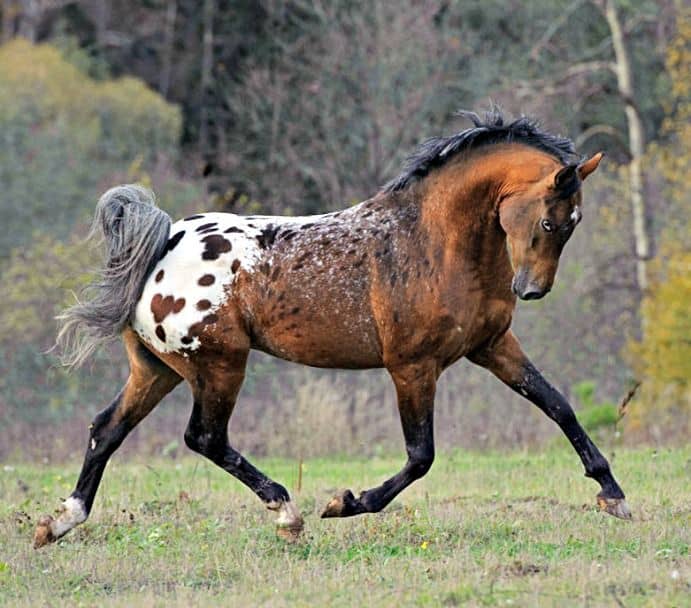
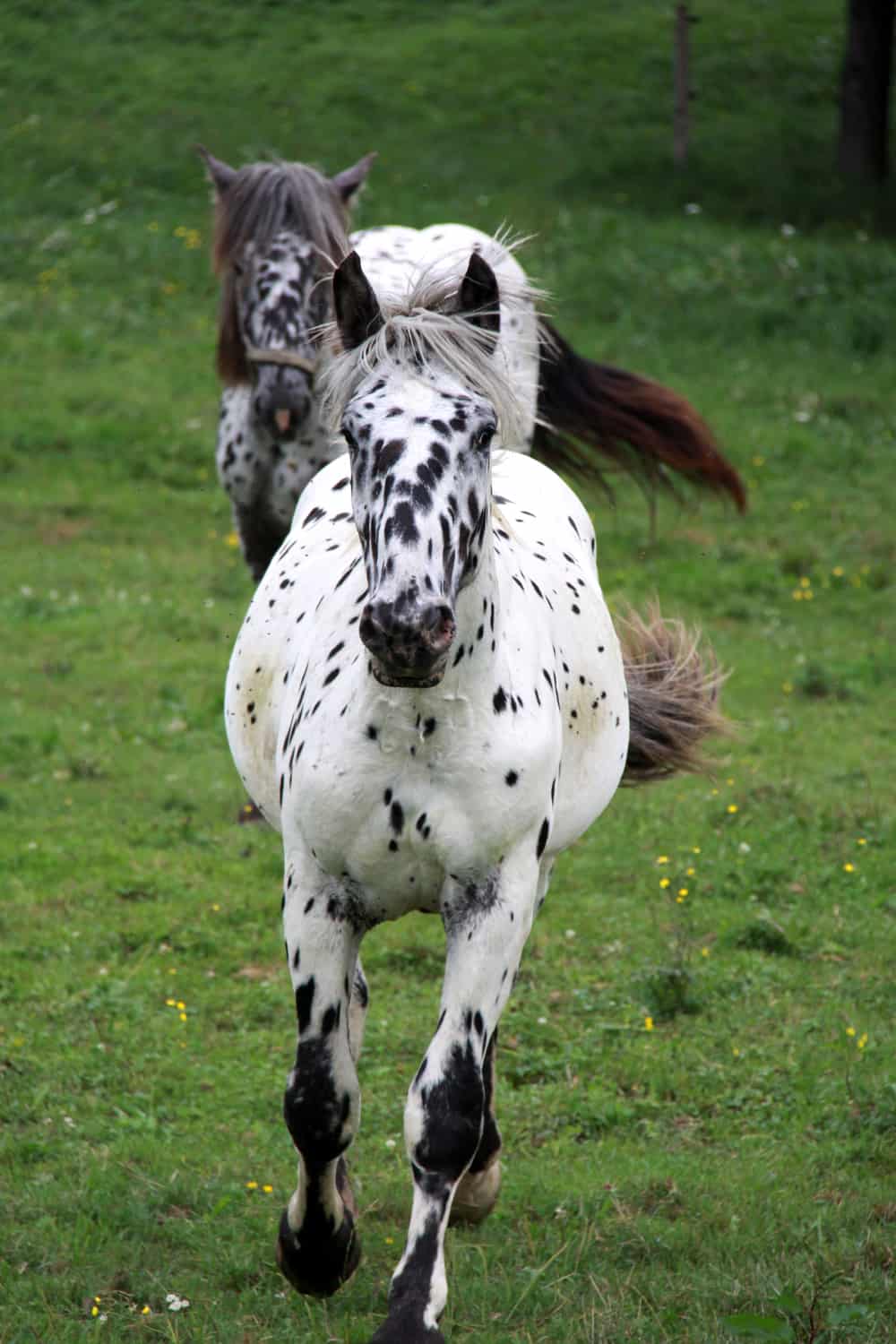
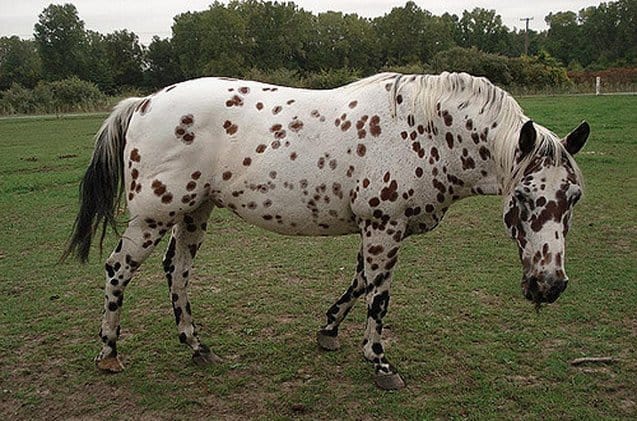
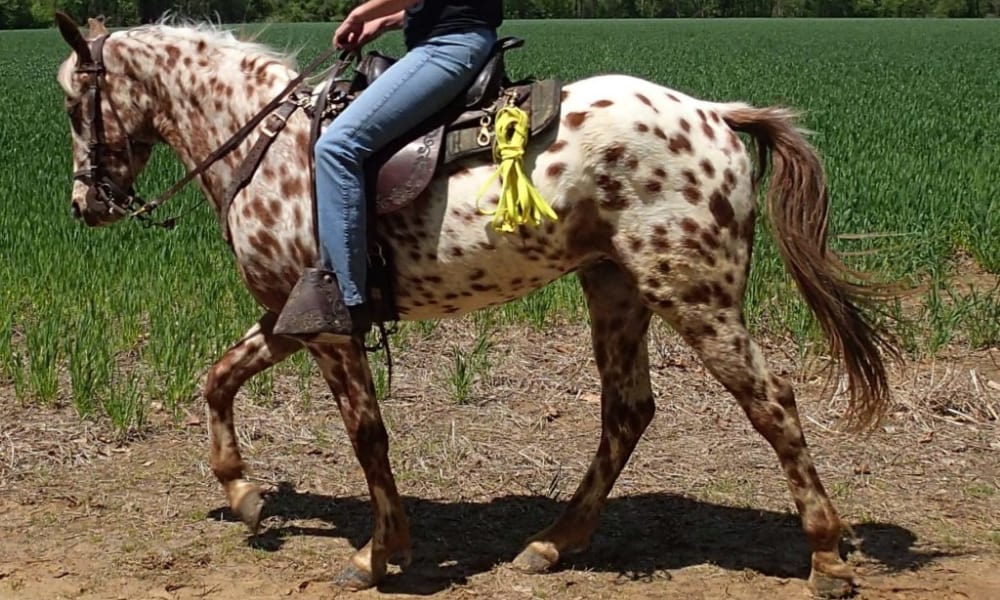
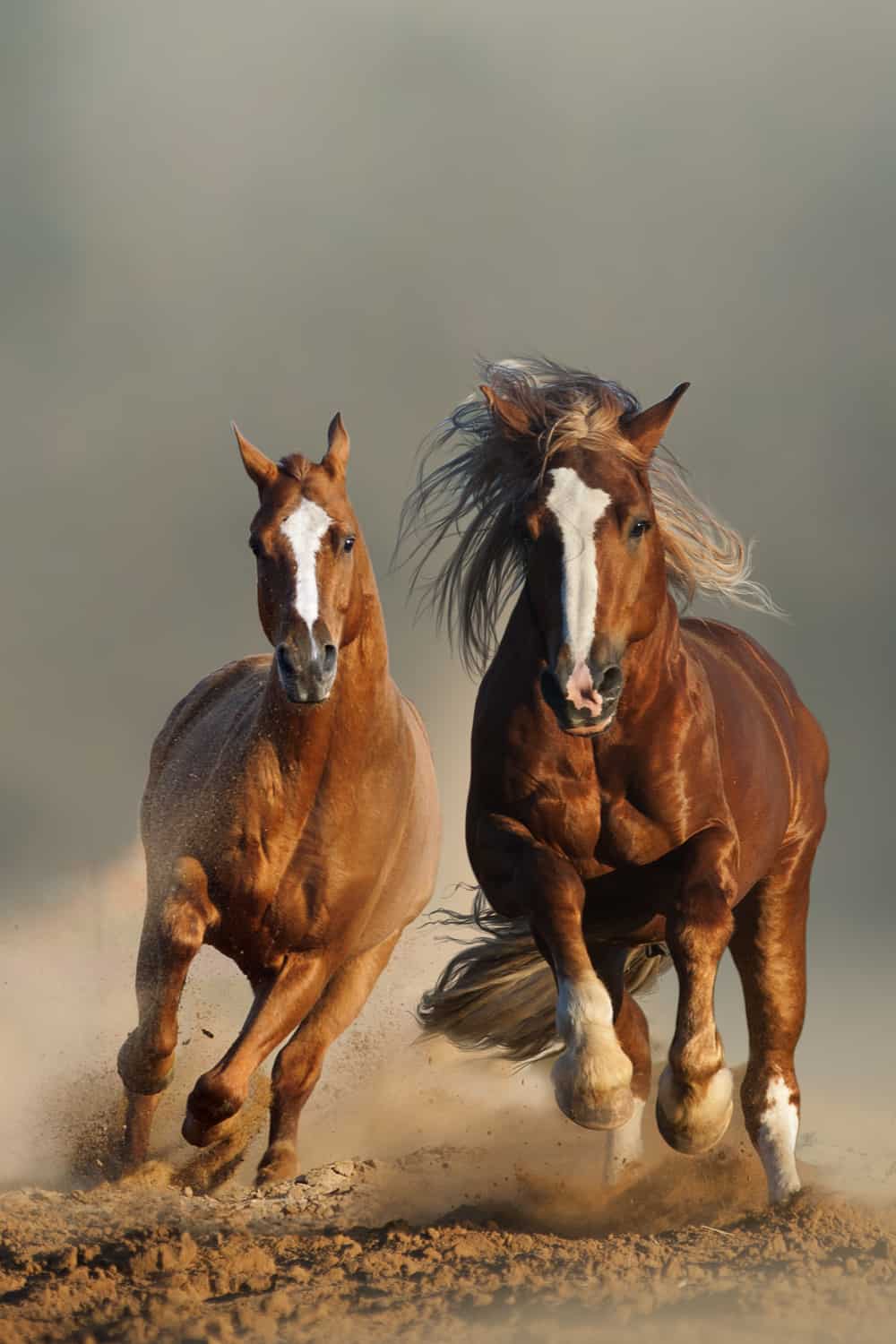
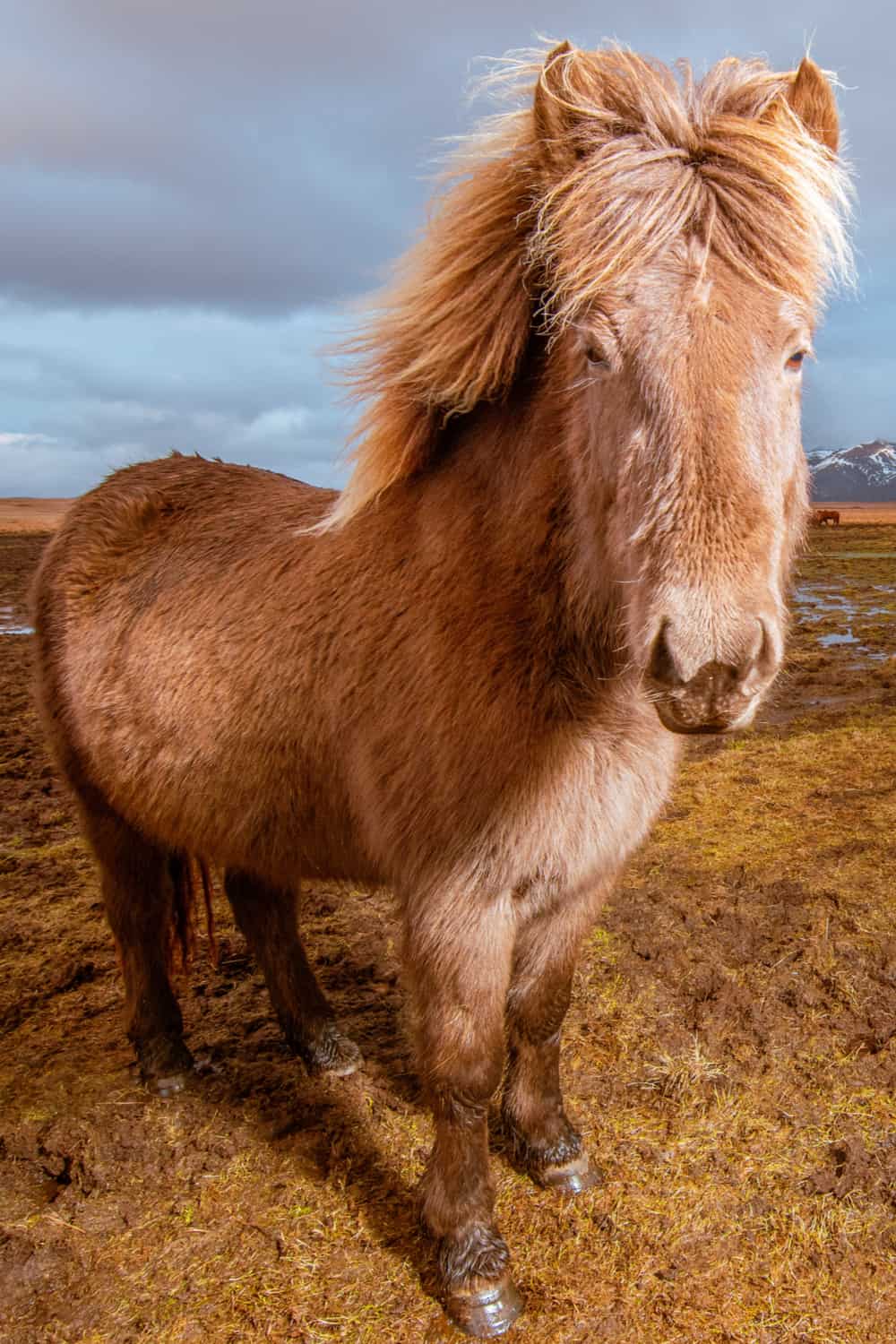
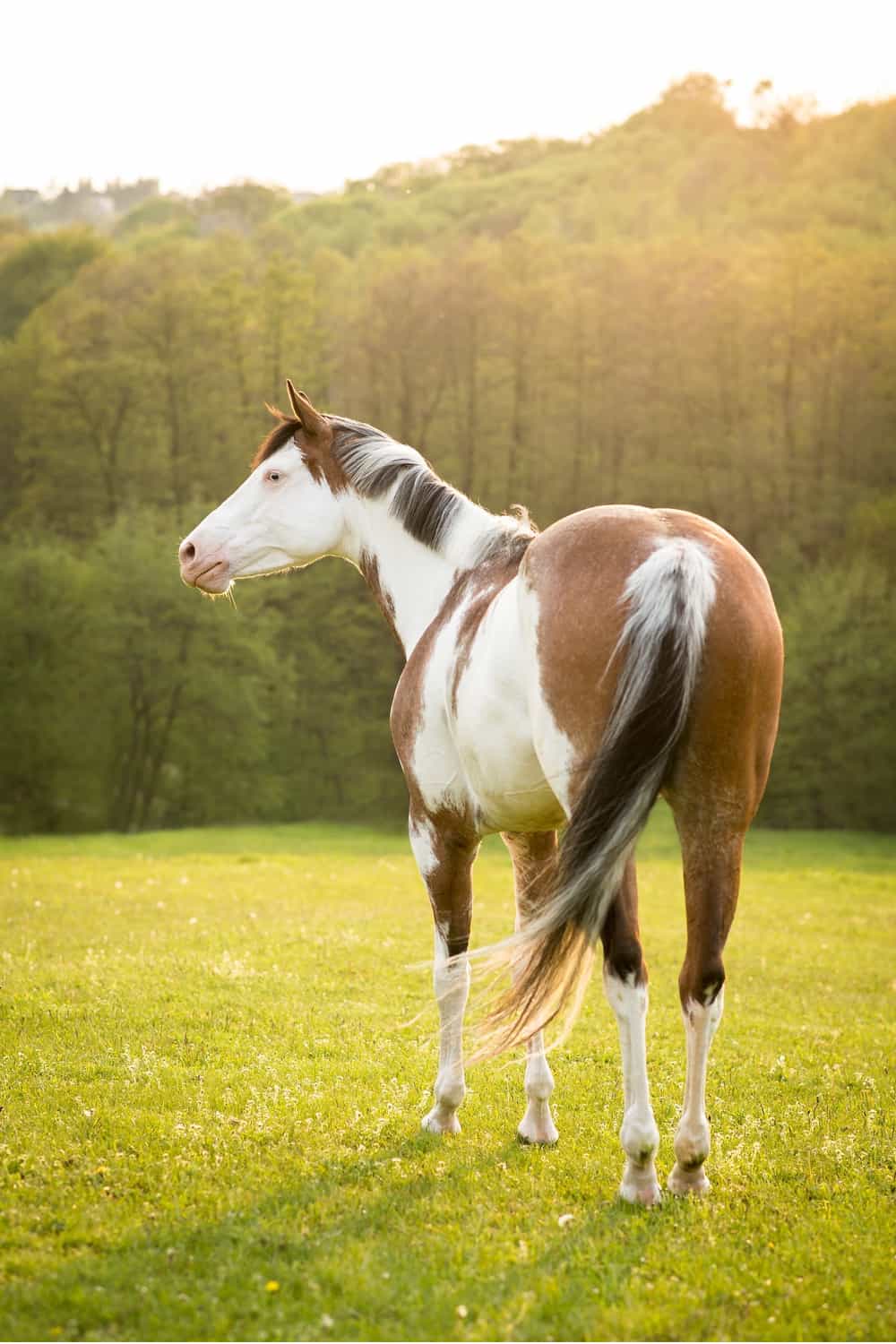








wonderful web site. I do pencil coloring here at an assisted living place. have always loved horses. had a small pinto horse when
I was in high school in Ohio. am 89 yrs. old now. in the newest book I am coloring there is a drawing of a mare and foal with dots over most of their bodies. I know about the Appaloosa horse but never learned of all these many different spotted horses. suzanne burgess